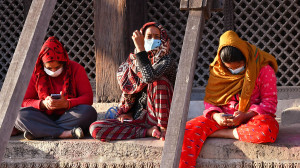Columns
Shades of rice
We must modernise our cultures so that food doesn’t define one’s place in the social hierarchy.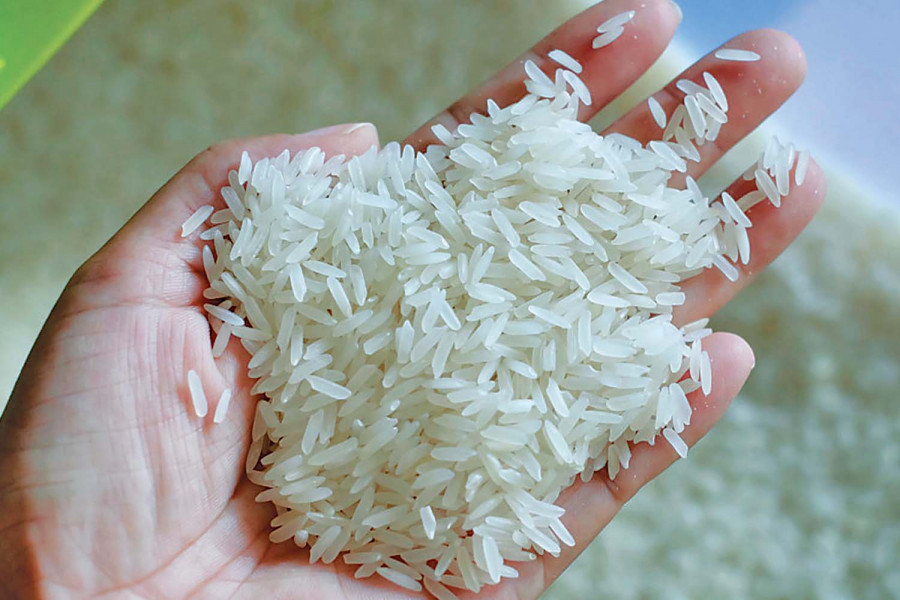
Mitra Pariyar
The monsoon is erratic, thanks to the growing impact of climate change. Nonetheless, rice transplantation is in full swing across the country.
Ever-increasing plots of arable land have been abandoned, more so in the hills and mountains, as increasing numbers of people move to the cities and flatlands of the south. Those still living in the rural communities are busy in their flooded paddies, hard at work, under the constant risk of floods and mudslides, expecting a good crop in autumn.
Rice production is so vital that on Asar 15 (June 29), the prime minister, some of his Cabinet members and other senior politicians want to touch and feel the wet earth and plant rice seedlings alongside the farmers. Rice is economically, spiritually, religiously, culturally and ritually important.
Venerable rice
Rice is an important staple and an important religio-cultural grain in many parts of the world, including southeastern and southern Asia.
In a 2006 paper presented to the Second International Rice Congress, rice experts SC Ahuja and U Ahuja note, “Rice is an integral part of rituals, ceremonies, rites de passage, and festivals of India.” The authors aptly call rice “venerable grains”.
The same is true, of course, for Nepal. Most Hindus and people of almost any other religious faith consider rice a sacred grain—a magical gift of Mother Nature.
In their 2021 study of Darchula, far-western Nepal, scholars Francesca Castagnetti, Jagdish Bhatta and Alexander Greene make a similar point, arguing that “Foodscapes are commonly embedded in spiritual landscapes.” Indeed, this also implies rice in our country.
Food in general, and rice in particular, has been an important cultural symbol for many Nepalis, more so for upper-caste Hindus (says the anthropologist Linda Stone in her 1978 research paper, for instance).
Rice has become a key link between men and their mythological and cosmological worlds, between people and their gods and goddesses, between living and dead relatives.
Dashain tika, consisting of husked rice and yoghurt, is a well-known example. The tika put on the forehead by senior relatives is considered an important cultural function for reviving and revitalising family and kinship ties every year. Of course, tika is also used on other auspicious occasions, such as puja and weddings.
The offering of pinda is an example of how rice forms a meaningful connection between the living and their dear relatives. According to the Garud Purana, the offering of pinda unites one’s soul with the ancestors.
Indian anthropologist Sipoy Sarveshwar’s recently published book Feast, Ritual and Daughters among the Newah of Nepal shows that offering pinda is still an important practice for many Newars.
Pindas are balls of cooked rice together with ghee and black sesame seeds. Hindus, mainly upper castes, offer these rice balls to their dead relatives during the funeral and ancestor worship.
Rice grains and the seasonal-spiritual cycles of their cultivation and harvesting often occupy a central place in many people’s lives. The Newars of the Kathmandu Valley, who have long been recognised as the producers of rice of great quality and quantity, are a case in point.
A 2018 study by Rishikesh Pandey of the many traditional festivals of the Newars of the Kathmandu Valley, published in QUEST: Studies on Religion and Culture in Asia, shows that these festivals revolve around three important concepts: religion, rainfall, and rice. They are designed and executed before, during and after paddy cultivation.
No wonder, as much of the rice paddies have been engulfed by concrete buildings and streets, following a rapid development of the Kathmandu Valley, the Newars are struggling to retain their ancient and sacred traditions.
Like any other good scholar, Pandey does not say whether this change is a good or a bad thing, but he shows how many Newars feel out of place in their own traditional homeland because of, inter alia, the rapid replacement of their rice paddies with a concrete jungle.
Although the skyrocketing value of real estate in recent years may be economically advantageous to landowning Newars, their religious and cultural practices have definitely suffered.
Ignoble rice
Though considered a sacred item, rice has sadly been used, like water, as a key marker of ritual purity and pollution. Rice, cooked rice in particular, has become a dividing line between the castes perceived as high or low, big or small.
Or those castes categorised as auspicious or inauspicious. To understand this, one must read American Professor Mary Cameron’s fascinating ethnography of Dalits in far-western Nepal, On the Edge of the Auspicious: Gender and Caste in Nepal (1998).
Food writer born to intercaste parents, Prashanta Khanal, made an apt observation in The Kathmandu Post of June 2020, “I have observed how food has defined the differences and supremacy of one culture over another.” The Newari side of his family was considered lower than the Brahmin one because they consumed buffalo meat, for instance.
In South Asia, including Nepal, the food one eats defines one’s caste identity and, thereby, one’s place in society. Rice plays a central role here, and this area of our society needs more research.
A wrong trend has developed where all discussions of caste discrimination and untouchability are focused, almost exclusively, on the lowest strata or Dalits. Because Dalits are considered “water un-usable”, as defined by the 1854 Civil Code, the role of other food items, such as rice, has not received much attention in the caste debates.
Rice forms a key divider among the non-Dalits who can exchange water. A Bahun would not accept rice cooked by other castes, including the Chhetri, and a Chhetri would not accept rice prepared by those below them, including the ethnic groups.
Similar rice-related issues exist among ethnic groups, too. For example, some Gurungs and Magars would not accept rice cooked by the Limbu! Many ethnic groups may not eat rice touched by the Tamangs because of the latter’s perceived ritual impurity.
The Tamang will resent their treatment as untouchables by other castes and ethnic groups while practising the same on Dalits (as American anthropologist David Holmberg found in Nuwakot, 2007).
Conclusion
We hear politicians and others talking about the need for an agricultural revolution to develop the nation. Enhancing the quality and quantity of rice production would be a key to that. Can we at least work towards building a new Nepal self-sufficient in rice?
The agriculture ministry should prioritise increasing rice production against all odds, including climate change and rural-to-urban migration. In the meantime, we should work towards modernising our cultures and customs so that food—rice at the centre—doesn’t define one’s place on social hierarchy.




 12.12°C Kathmandu
12.12°C Kathmandu
.jpg&w=200&height=120)
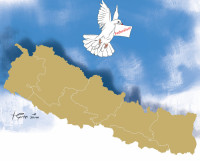

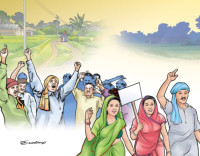


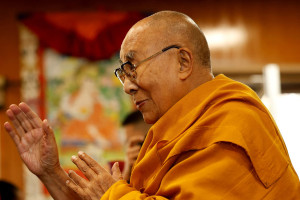
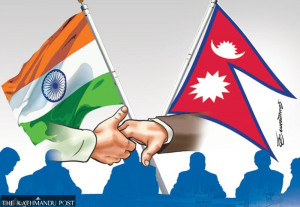





%20(1).jpg&w=300&height=200)

